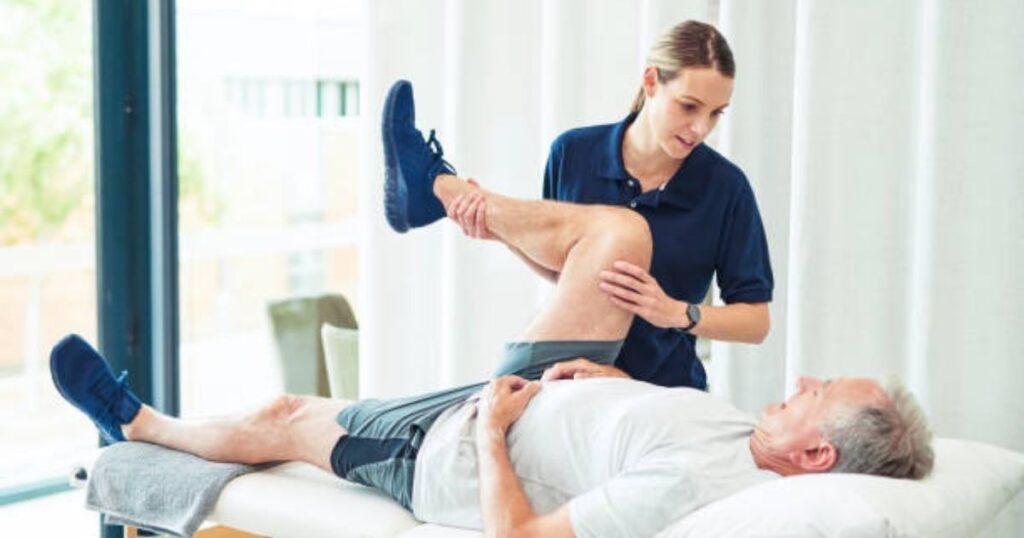If you’ve ever experienced post-massage soreness, you’re not alone. While massage therapy offers numerous benefits for both physical and mental well-being, the discomfort that follows can be surprising. In this comprehensive guide, we’ll delve into the reasons behind post-massage soreness, its duration, and effective strategies to alleviate and prevent it.
Understanding Post-Massage Soreness:
Post-massage soreness is a natural response to the physical manipulation of muscles during a massage session. It resembles the soreness experienced after vigorous exercise and is characterized by aching muscles, tenderness, and tightness. This discomfort, ranging from mild to intense, can last from a few hours to a few days, depending on various factors.
Why Does Post-Massage Soreness Occur?

While post-massage soreness can follow any massage, it’s particularly common after deep tissue massages. The microscopic damage to muscle fibers during such sessions, caused by the manipulation and pressure, triggers an inflammatory response. This response initiates the repair and rebuilding of muscle tissue, ultimately enhancing strength and flexibility over time. It’s crucial to recognize that post-massage soreness is a normal part of the process and not necessarily indicative of a poor massage.
Do Massages Always Hurt?
Contrary to the misconception that massages should be painful, they are generally relaxing and therapeutic. Skilled massage therapists adjust their pressure based on the client’s comfort level. Effective communication between the client and therapist ensures a comfortable and beneficial massage experience. “Delicious pain” rather than “scary pain” should be the sensation during a session.
When to Speak Up:
Clients are encouraged to communicate any discomfort or excessive pressure during a massage. A skilled therapist will always adjust their techniques to ensure a comfortable and effective session. If post-massage soreness persists for more than a few days or is accompanied by unusual symptoms, seeking medical attention is advised.
Can Post-Massage Soreness Be Prevented?
Yes, post-massage soreness can be minimized through open communication with a licensed massage therapist. Before the massage, informing the therapist about sensitive areas or medical conditions helps tailor the session to individual needs, maximizing comfort.
Tips to Alleviate Post-Massage Soreness:

Stay Hydrated:
Drinking water before and after a massage helps flush out toxins, reducing soreness. Avoid alcohol and caffeine, as they can dehydrate the body.
Take a Hot Shower:
A hot shower post-massage relaxes muscles, increases blood flow, and reduces inflammation. Wait at least an hour after the massage before taking a hot shower.
Epsom Salt Bath:
Epsom salts in a warm bath alleviate soreness by relaxing muscles and reducing inflammation. Soak for 15 to 20 minutes, ensuring a comfortable water temperature.
Rest and Relax:
Allow your body time to rest after a massage, promoting muscle recovery and overall relaxation.
Guided Meditation:
Meditation reduces stress, tension, and post-massage soreness. Various guided meditation practices are available to calm the mind and promote healing.
Gentle Stretching:
Gently stretch after a massage to enhance blood flow, reduce inflammation, and promote healing. Focus on slow, controlled movements.
Cold Therapy:
Applying cold packs to affected areas reduces inflammation and swelling, providing relief. Use ice packs for 10-15 minutes with breaks in between sessions.
Herbs and Essential Oils:
Chamomile, lavender, arnica, and essential oils like peppermint, eucalyptus, and rosemary offer natural anti-inflammatory and pain-relieving properties.
Is it Worth Getting a Massage Despite Soreness?
Absolutely! Despite potential post-massage soreness, the long-term benefits of massage therapy, including stress reduction, improved flexibility, circulation, and reduced inflammation, outweigh temporary discomfort. Mild soreness is manageable with the tips provided.
Read Also:
FAQs:
How long should you be sore after a massage?
Mild soreness should last a day or two. Persistent soreness may indicate the need for adjustments in massage technique.
Is it good to be sore after a massage?
Mild soreness can indicate an effective massage. Communicate discomfort to the therapist and follow post-massage care recommendations.
Does massage burn calories?
While some types of massage may increase calorie burn slightly, it’s not a significant weight loss method. Massage is better approached as a holistic health practice.
What happens to your body after a deep-tissue massage?
A deep tissue massage reduces muscle tension, increases blood flow, promotes relaxation, and may cause temporary soreness, usually resolving within a day or two.
Conclusion:
In conclusion, understanding that mild post-massage soreness is a normal part of the healing process is essential. Taking proactive steps, such as staying hydrated, gentle stretching, and incorporating hot or cold therapies, can significantly reduce discomfort. Embracing the long-term benefits of regular massages makes the occasional soreness worthwhile.


Pingback: Can a Massage Make You Sick? - The Style Sleek